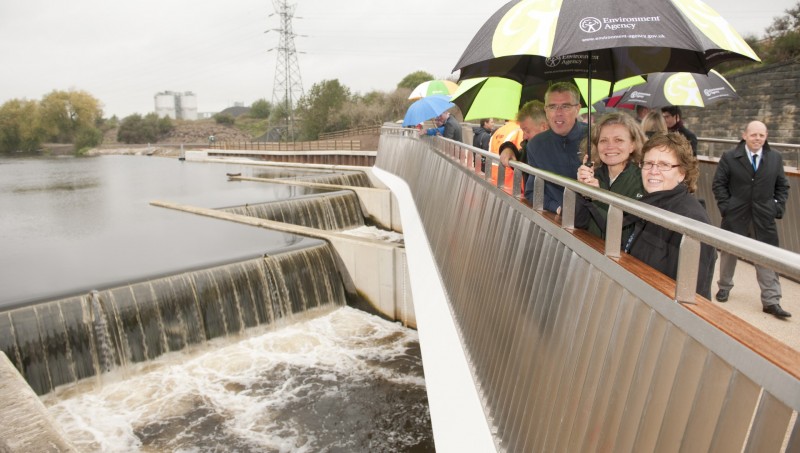
The £50m scheme consists of two weirs, located in the centre of Leeds at Crown Point and further upstream on the River Aire at Knostrop, where a new bridge connects the diverted Trans Pennine Trail — a popular walking and cycling route — on top the north bank of the river.
“We’ve provided 36 separate zones of the linear works up through the city centre. The project’s main innovation is the moveable weirs, controlled by air bladders,” commented Andy Judson, project manager for engineering firm BAM Nuttall, which delivered the scheme in a joint venture with Mott McDonald. “We’ve had a really strong ‘one team’ ethos on this project. We’ve all been co-located and understood that by working together, we would get the job finished on time and on budget. We estimated that there are around 125,000 people who have live or work within sight of the project, so there are an awful lot of stakeholders and an awful lot of careful management that has gone into looking after people.”
The scheme, which was designed after a severe storm caused flooding in Leeds on Boxing Day 2015, damaging over 2500 homes and nearly 70 businesses, also involved the removal of a manmade island at Knostrop which separated the river from the Aire and Calder Canal and caused a bottleneck. Some 180,000 tonnes of excavated material were used to divert the Trail (which previously went across the island) and on a local development site, shaving an estimated £6m from the total cost.
The two weirs have both been designed with fish and eel passes, and since water quality has improved in the Aire salmon have returned to the river. Ramps and holts for otters have also been introduced. Flood protection is provided by weir gates that are supported on inflatable neoprene bladders which allow the gates to be lowered in around two hours when high water flows are expected. This technology has allowed river walls to be kept low, preserving waterfront views. Companies working on the scheme include BAM Nuttall, Knight Architects, Arup and Mott McDonald.
One of the largest flood defence schemes in the country, the installation is hoped to provide protection for 3000 homes, 500 businesses (employing 22,000 people) and 300 acres of development land against flooding from the Aire and Hol Beck. As well as the weirs and bridge, it comprises merging of river and canal flood walls and 4.5km of embankments through the city.
“The clever use of the mechanical weirs is a brilliant idea, and they have also brought about environmental benefits with the improved river quality bringing salmon and otters, while the new bridge looks stunning offering great views of the river and beyond as part of the Trans Pennine Trail,” commented Leeds City Council leader Judith Blake, opening the facility.
Environment Agency chair, Emma Howard Boyd, added that the scheme was part of £430m that is being invested in flood protection in Yorkshire up to 2021; this itself part of £2.5bn investment across the country.
A consultation is now under way for a second phase for the scheme to protect communities upstream of the Aire.
https://www.theengineer.co.uk/issues/april-2015-online/7-civil-engineering-projects-transforming-the-uk-right-now-and-the-employers-building-them/




Red Bull makes hydrogen fuel cell play with AVL
Formula 1 is an anachronistic anomaly where its only cutting edge is in engine development. The rules prohibit any real innovation and there would be...